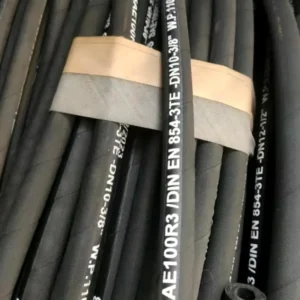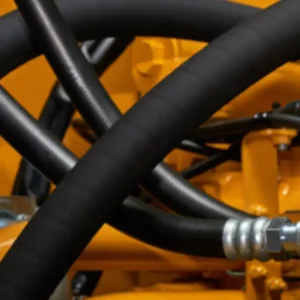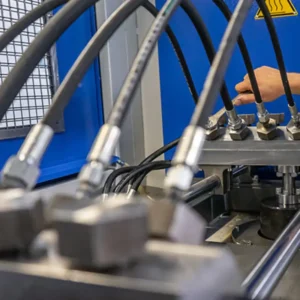Unlike a smooth-bore hose, the corrugated design is not just for looks; it’s the key to its incredible performance. These convolutions allow the hose to bend and flex in ways that a smooth hose simply cannot, all while maintaining its structural integrity.
This unique form factor is what makes the convoluted hose so valuable. It gives the hose a tight bend radius and prevents it from kinking, which is a common failure point for other hoses. This simple design feature opens up a world of possibilities for applications where tight turns and constant motion are part of the job.
How Is a Convoluted Hose Constructed?
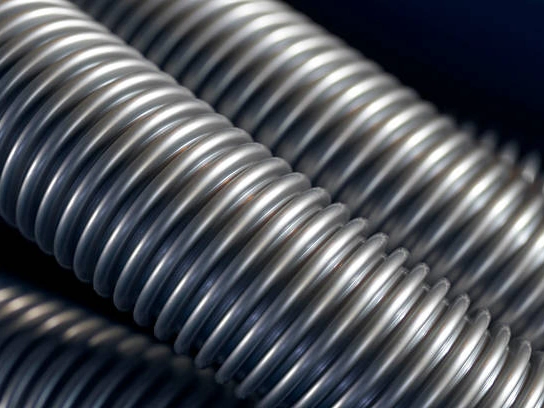
The construction of a convoluted hose involves a process where the inner and outer surfaces are formed into their characteristic corrugated shape. This design increases the surface area of the hose and distributes stress evenly along its length. The material used is just as important as the shape. Convoluted hoses can be made from a variety of polymers, including PTFE (Teflon), silicone, rubber, and various thermoplastics.
Often, these hoses feature a smooth inner wall with a convoluted outer wall to improve flow efficiency while retaining flexibility. Some are reinforced with braiding, such as stainless steel, which adds incredible strength and pressure resistance. This type of reinforced convoluted hose is a workhorse in high-pressure or high-temperature environments.
What Are the Pros and Cons of Convoluted Hoses?
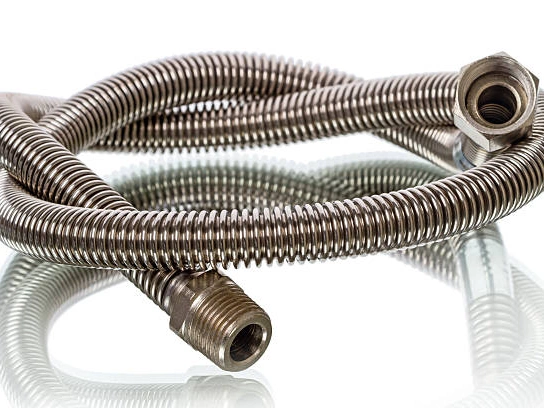
When deciding if a convoluted hose is right for a job, I always weigh its benefits against its drawbacks. Its greatest strength is undoubtedly its flexibility and bend radius. It can be routed through tight spaces without kinking, which is a major advantage in confined areas like engine compartments or in robotic arms. It also has a high tolerance for both positive and negative pressure, making it suitable for a wide range of applications.
However, it’s not without its challenges. The convoluted design can lead to pressure drops and make the hose harder to clean internally, as debris can get trapped in the crevices. I’ve found that for applications requiring a perfectly sanitary or obstruction-free flow, a smooth-bore hose is often a better choice. The outer ridges can also be more susceptible to abrasion compared to a flat surface.
| Advantages of Convoluted Hose | Disadvantages of Convoluted Hose |
| Superior Flexibility | Potential for Pressure Drop |
| Excellent Bend Radius | Difficult to Clean Internally |
| Kink-Resistant | Prone to External Abrasion |
| Vibration Dampening | Higher Cost than Smooth-Bore |
| Versatility in Applications | Not Ideal for Sanitary Transfer |
What Materials Are Convoluted Hoses Made From?
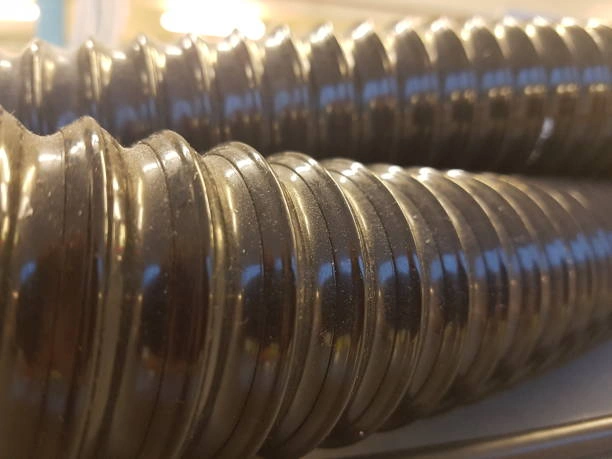
The material a convoluted hose is made from dictates its ideal application. I’ve worked with several different types, and each has its own unique properties.
- PTFE Convoluted Hose: Known for its chemical inertness, wide temperature range, and non-stick properties. A PTFE convoluted hose is a top choice for handling aggressive chemicals, pharmaceuticals, and high-purity fluids. The stainless steel braiding on the outside adds strength and durability.
- Silicone Convoluted Hose: Highly flexible and excellent at withstanding extreme temperatures. A silicone convoluted hose is a staple in the automotive and aerospace industries for air intake systems and coolant lines. Its flexibility makes it perfect for routing in tight engine bays.
- Rubber Convoluted Hose: A durable and cost-effective option for applications requiring moderate pressure and temperature resistance. Rubber hoses are commonly used for general-purpose industrial fluid transfer and for protecting cables in heavy machinery.
- Thermoplastic Convoluted Hose: Often made from materials like polypropylene or polyethylene. These hoses are lightweight and resistant to various chemicals, making them popular for vacuum applications and cable protection. I’ve seen them used extensively for protecting wiring harnesses in both vehicles and industrial robotics.
Where Are Convoluted Hoses Used?
Once you understand what corrugated hose is, you’ll start seeing it everywhere. Its versatility means it’s used in countless industries.
- Automotive: The most common use is in engine bays for air intake, turbocharger, and coolant lines. The hose’s flexibility allows it to snake around other engine components without kinking. I’ve also seen them used as protective conduits for wiring harnesses to shield them from heat and abrasion.
- Industrial and Manufacturing: A convoluted hose is a workhorse in manufacturing plants. It is used for transferring chemicals, hydraulic fluids, and even as a protective conduit for pneumatic and electrical lines on robotic arms that need to move and flex constantly.
- Aerospace: Due to their lightweight nature and ability to withstand extreme temperatures, these hoses are perfect for aerospace applications like fuel lines and environmental control systems on aircraft.
- Medical and Pharmaceutical: The chemical resistance of a PTFE convoluted hose makes it an excellent choice for transferring sterile fluids and pharmaceutical products where cleanliness and purity are paramount.
- Food and Beverage: Certain food-grade convoluted hoses are used for transferring liquids and powders in food processing plants. While the cleaning can be a challenge, specialized cleaning systems are used to ensure sanitary conditions.
Conclsuion
Corrugated hoses are essential professional tools in the fields of fluid dynamics and material handling. Their unique ribbed design isn’t a gimmick; it’s a feature that solves complex issues related to flexibility, kinking, and vibration. While not suitable for all applications, they are essential components in numerous industries. Understanding their properties and applications is key to selecting the right hose for efficiency and safety.

